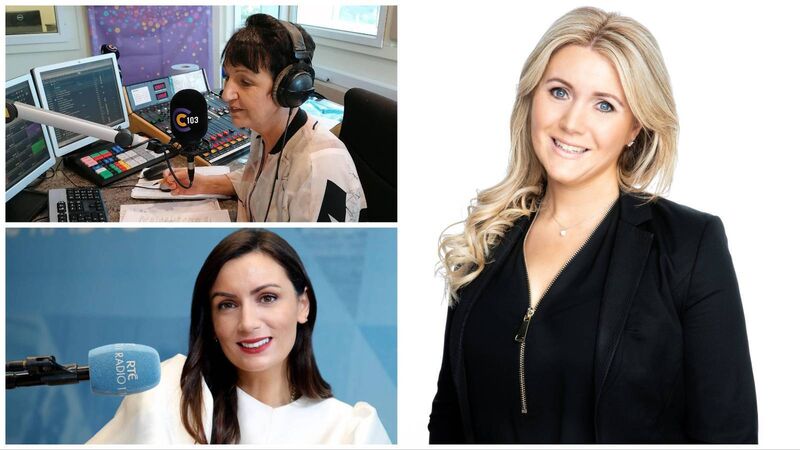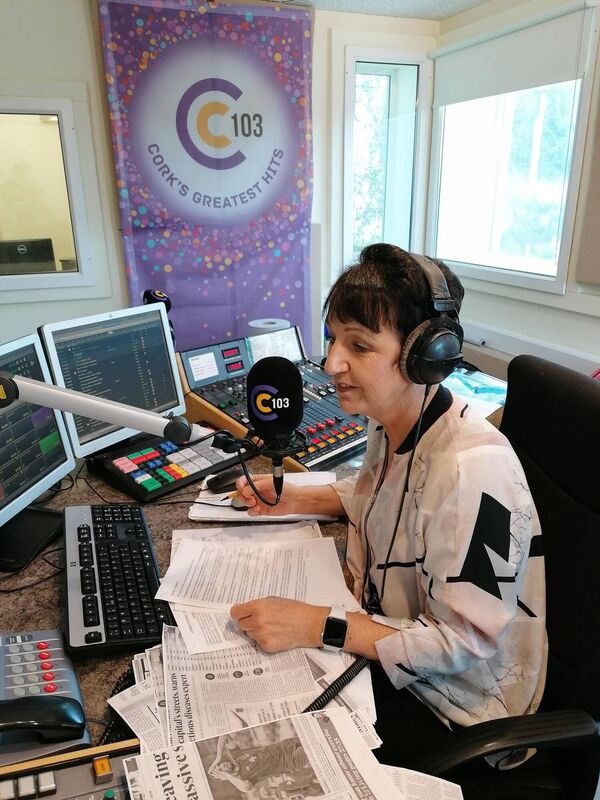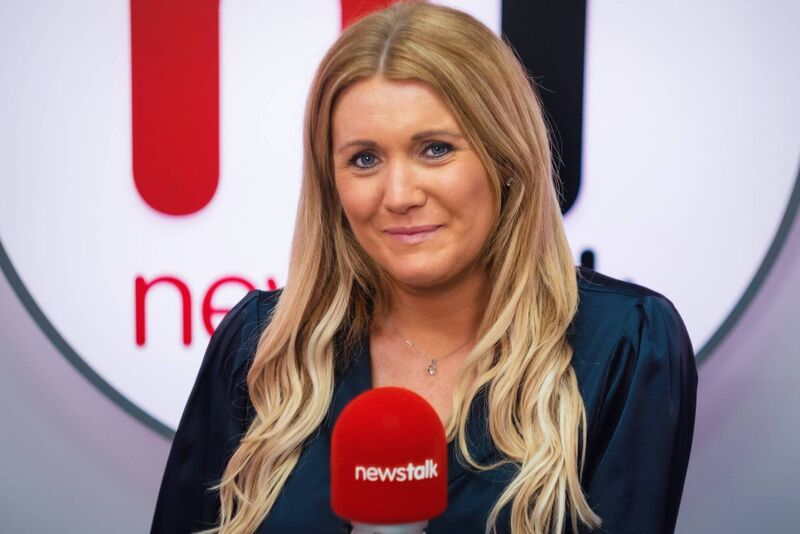Meet three female radio presenters who have 50 years of experience between them

Clockwise from top left: C103's Patricia Messinger, Newstalk's Andrea Gilligan and RTÉ's Louise Duffy
There can be little doubting Irish people’s love of radio. Figures released recently showed that over three million adults in Ireland tune into radio every weekday with more than 50% listening to their local station regularly.
While there’s little debate around radio’s popularity in Ireland, arguments around equality of representation on Irish radio persist.
Back in 2015, the National Women’s Council’s ‘Hearing Women’s Voices?’ study found that women were under-represented right across news and current affairs on our airwaves. It found that between presenters and contributors there was a split of 72% for men and 28% for women.
When she hosted the first Cork Today 33 years ago, C103’s Patricia Messinger was something of a pioneer. There were very few female presenters in talk radio, particularly at a local level.
The Tipperary native was bitten by the broadcasting bug when RTÉ visited her primary school and asked pupils to help them with a show.
“I remember the reaction to it when it went out,” says Patricia. “All I was doing was talking and we got this amazing reaction.” The talking continued into secondary school — much to the annoyance of an unwitting nun who told Patricia that she’d never find a “job that would pay you to talk”.
By the time she left school, pirate radio had started to take off and Patricia found herself “in the right place at the right time”.

“I was really lucky,” she says. “I joined my local station in Clonmel straight out of school. Pirate radio was great like that; you went in and you learnt on the job. I did everything — news, music shows, quiz shows. I eventually stumbled into talk radio, a current affairs show, and I kind of found my niche there. I liked hearing people’s stories and sharing them.”
For Patricia, radio is a passion and when she is not behind the mic herself, she is inevitably tuning in: “If I was stranded on a desert island and I had a choice between a television and a radio, I would take the radio hands down. I think it’s the intimacy of it. You’re listening to a voice and it’s just talking to you.
"Good radio can take you somewhere else and for that moment you’re lost. It’s theatre for the mind. Even with all these podcasts and other distractions, radio is thriving. We seem to be blending together and there’s room for the both of us. I listen to podcasts myself. But I think with radio it’s immediate. It’s live. Long may it last.”
For Newstalk’s Andrea Gilligan that immediacy is one of radio’s biggest strengths.
“It's the speed of it,” says the presenter of Lunchtime Live.
“The speed at which you can bring news stories and conversation to people. I’ve done a small bit of TV, and it’s so much slower. There’s so much more involved in making it. Radio is pacier. There’s scope for so much more analysis. You can move from one item to another without worrying about the graphics and everything that goes with it. It’s not as tiresome as TV and it’s much more accessible.”
The Donegal woman will be 10 years at the national station this coming May. After studying for an Arts Degree and then a Master’s in Journalism at NUIG, the 38-year-old spent six years with the likes of Shannonside Radio, Northern Sound and Ocean FM, before she decided to head to the capital in 2013.

“Everyone thought I was bonkers leaving a full-time job in media to move to Dublin,” she recalls. “I was the news editor with Ocean FM. At that time journalism jobs were nowhere to be found. I had no affiliation with Dublin or family and nobody to stay with, but I did it and it’s gas looking back now.”
That determination was a necessary quality. Andrea has presented several shows across Newstalk, many of them at ungodly hours. For years, early risers could get her Breakfast Briefing on their morning commute while on Sundays she hosted Between the Lines from 8am to 9am.
In September 2020, she took on the lunchtime slot where her authenticity and empathetic style shone.
“I love chatting to people and getting to know them,” she says.
“There’s good craic that comes with hearing people’s stories too. Again, it’s that intimacy that other media just don’t offer. It’s the accessibility of it and in an age of disinformation, people are keen to seek out accurate sources. I think we’re a news-hungry nation. We’re certainly a radio nation. Radio is in a strong place.”
Just as Andrea is settling in behind the mic every weekday, across Dublin Louise Duffy is bringing her selection of music to the lunchtime listeners of RTÉ Radio 1. Louise has been in broadcasting since 2008 when she started guiding us through the roadworks and roundabouts of Ireland with AA Roadwatch.
“When it comes to anything professional, I’m always reluctant to talk about luck,” she says. “But in radio and media, there is a degree of it. I was lucky that I was broadcasting with Ian Dempsey because we built a rapport and had fun on air. People knew me and that gave me the opportunity to go on air in the early morning slot when that became available.”
From there Louise went on and produced her own popular show on Today FM before taking over from Ronan Collins at RTÉ Radio 1 earlier this year.

“Irish listeners have a very special relationship with radio,” says Louise. “People spend their time with us when they’re in the car driving across the country or when they’re up in the middle of the night with a baby. It almost feels like a one-to-one conversation. In the last couple of years, with the pandemic, it’s become even more important.”
“There’s interactivity. I can get a text from a listener and straight away respond to that by playing them a request or mentioning them. On the new show, I’m already seeing some names that are becoming familiar through the text lines, and that’s nice.”
When her appointment was announced, much was made of the fact that Louise was the first woman to present the lunchtime music programme on RTÉ Radio 1. For Louise, the issue of what has been, historically, a 'criminally' low number of female voices behind the microphone is being addressed.
“I think it’s absolutely progressing,” she says. “You only have to look at schedules across Radio 1 and 2FM to see that. I can only speak from experience. I was welcomed into this world and I found my place. If you look at the music industry or festival lineups for example, there is a disparity there in ways but I think radio is addressing that. There are lots of really strong female voices on Irish radio now and there are a lot more to come.”
“There are definitely more women in radio today than when the independent stations first opened up in the late 80s,” says Patricia. “While I would love to see the day where we had a 50/50 split with on-air talent, it certainly is a much more welcoming environment for females.”
That can only be a positive thing for radio in Ireland; a medium that has been sent to the gallows of history on more than one occasion but has somehow managed to evade its deadly noose.
“When television and daytime TV came along, everyone thought we’d just watch that,” says Patricia. “'Who’s going to listen to the radio?' they thought, but that didn’t happen. They said video would kill the radio star. It didn’t.”










